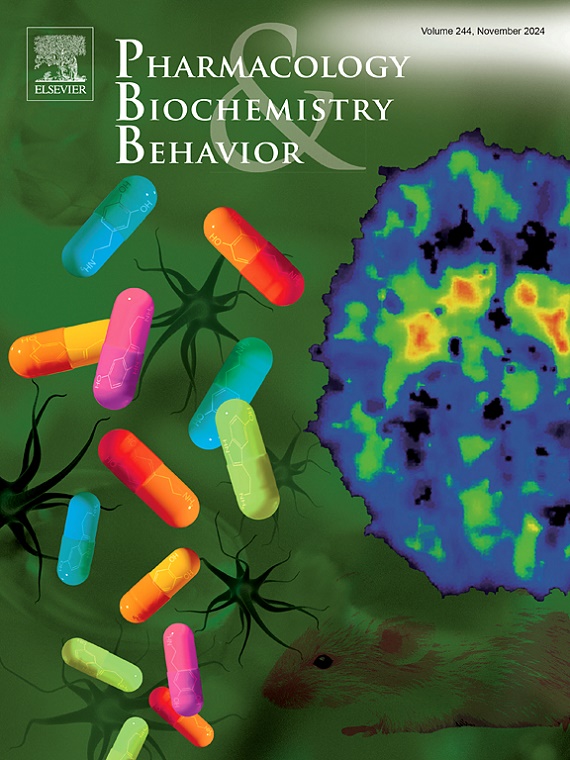Intermittent environmental enrichment induces behavioral despair, while intermittent social isolation impairs spatial learning in rats
IF 3.3
3区 心理学
Q1 BEHAVIORAL SCIENCES
引用次数: 0
Abstract
Environmental enrichment and social isolation constitute two well-studied experimental manipulations that result in several behavioral, neural, and molecular changes in rodents. Enrichment is linked to enhanced cognitive performance, and mitigation of different nervous system injuries and disorders. In contrast, social isolation or impoverished environment often induce negative effects on cognitive and affective systems. Both manipulations are typically examined with a short-term or chronic exposure, which cannot capture the actual human experiences. In this study, we explored the behavioral and neural alterations led by intermittent environmental enrichment or social isolation in adult Wistar rats. Animals were assigned to an enriched condition (EC), isolation/impoverished condition (IC), or standard condition (SC). The differential housing protocol involved transferring the animals to their respective cages for two days at the end of each five-day standard housing period for 8 weeks. Enriched animals exhibited behavioral despair in the forced swim test without differential overall locomotor activity. In the Morris water maze, impoverished animals displayed a slower learning rate compared to the SC and EC groups. In line with this, the IC group had fewer parvalbumin (PV) immunopositive (+) cells in the CA1 and dentate gyrus. No differences were observed in PV+ cell levels in the amygdala, while the IC group had more c-Fos+ cells in the same region following acute restraint stress. These findings implicate that intermittent isolation or enrichment are sufficient to trigger distinct behavioral changes at the cognitive and affective domains, and pinpoint PV as a biomarker for environmentally induced alterations in hippocampal memory performance.
间歇性的环境丰富会导致行为绝望,而间歇性的社会隔离则会损害大鼠的空间学习能力。
环境丰富和社会隔离构成了两种被充分研究的实验操作,它们会导致啮齿动物的一些行为、神经和分子变化。浓缩与增强认知能力和减轻不同神经系统损伤和疾病有关。相反,社会孤立或贫困的环境往往会对认知和情感系统产生负面影响。这两种操作通常都是通过短期或长期暴露来检查的,这无法捕捉到实际的人类体验。在这项研究中,我们探讨了成年Wistar大鼠在间歇性环境丰富或社会隔离下的行为和神经改变。动物被分配到丰富条件(EC),隔离/贫困条件(IC)和标准条件(SC)。差别饲养方案涉及在8 周的每个5天标准饲养期结束时将动物转移到各自的笼子中,为期两天。富营养化动物在强迫游泳试验中表现出行为绝望,整体运动活动无差异。在莫里斯水迷宫中,贫困动物的学习速度比SC组和EC组慢。与此一致,IC组CA1和齿状回的小白蛋白(PV)免疫阳性(+)细胞较少。在杏仁核的PV+细胞水平没有观察到差异,而IC组在急性约束应激后同一区域有更多的c-Fos+细胞。这些发现表明,间歇性分离或富集足以引发认知和情感领域的明显行为变化,并指出PV是环境诱导海马记忆性能改变的生物标志物。
本文章由计算机程序翻译,如有差异,请以英文原文为准。
求助全文
约1分钟内获得全文
求助全文
来源期刊
CiteScore
6.40
自引率
2.80%
发文量
122
审稿时长
38 days
期刊介绍:
Pharmacology Biochemistry & Behavior publishes original reports in the areas of pharmacology and biochemistry in which the primary emphasis and theoretical context are behavioral. Contributions may involve clinical, preclinical, or basic research. Purely biochemical or toxicology studies will not be published. Papers describing the behavioral effects of novel drugs in models of psychiatric, neurological and cognitive disorders, and central pain must include a positive control unless the paper is on a disease where such a drug is not available yet. Papers focusing on physiological processes (e.g., peripheral pain mechanisms, body temperature regulation, seizure activity) are not accepted as we would like to retain the focus of Pharmacology Biochemistry & Behavior on behavior and its interaction with the biochemistry and neurochemistry of the central nervous system. Papers describing the effects of plant materials are generally not considered, unless the active ingredients are studied, the extraction method is well described, the doses tested are known, and clear and definite experimental evidence on the mechanism of action of the active ingredients is provided.

 求助内容:
求助内容: 应助结果提醒方式:
应助结果提醒方式:


